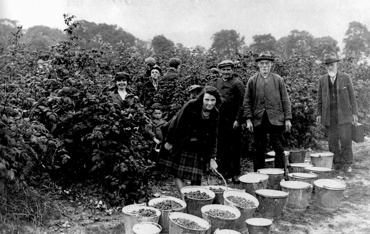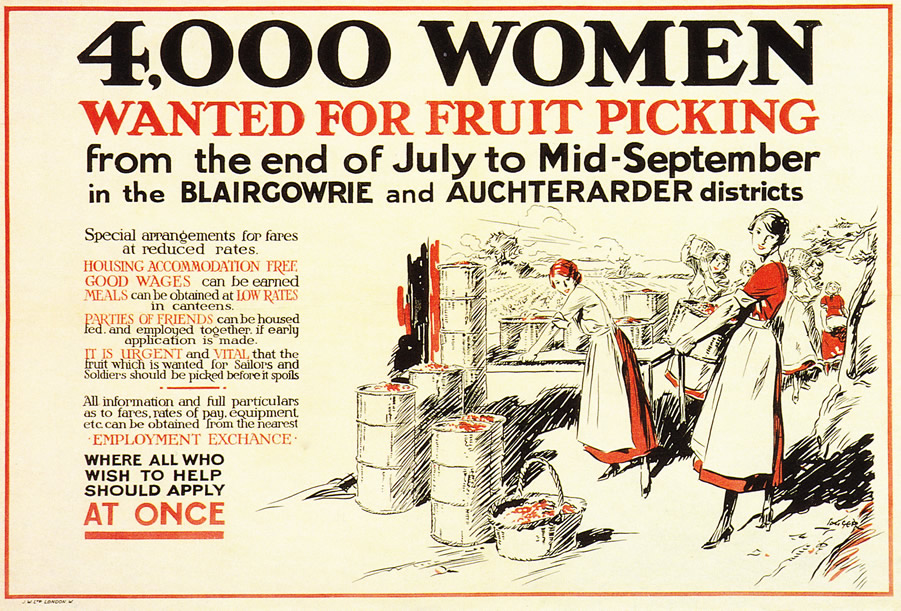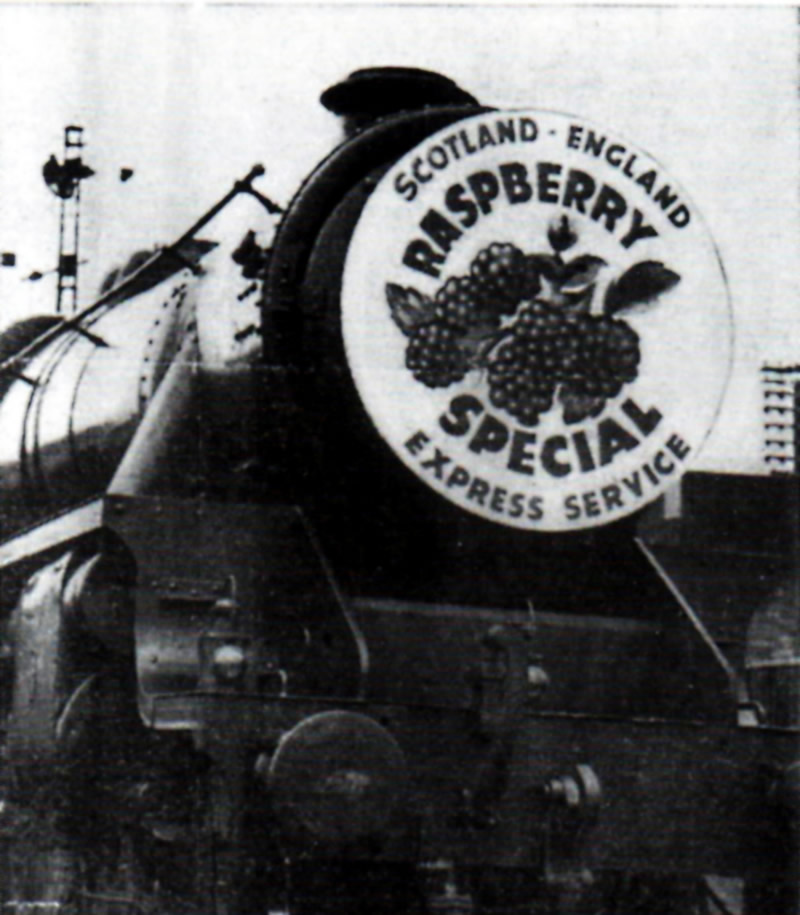Our Heritage Timeline
The Berry Toon

The Berry Toon
4000 women wanted !
Why Blairgowrie and Rattray is dubbed the soft fruit capital of the UK
1895 brought about a big change in the berry growing business for Blairgowrie and Rattray with the founding of the Blairgowrie and Rattray Fruitgrowers Association.
Known as Perthshire’s soft fruit capital, Blairgowrie and Rattray is also dubbed the ‘Berry Toon.’ To learn why we need to go back to the 1840s when David West, who lived at the Muir of Blair (now Rosemount) started growing strawberries on a small scale. He found that his strawberries grew very well and he expanded his business to grow several acres of strawberries. Back then most of the fruit would have been transported by horse and cart to Dundee to be made into jam. Rosemount strawberries were in great demand, and with the opening of the railway in 1855, the fruit could be sent to Glasgow and Edinburgh.
However, it is for the growing of raspberries that Blairgowrie is better known. There were several major players in the early history of the raspberry industry.
At Smiddy Brae, Old Rattray, Martin Moran and his wife Helen Boylem had started planting, growing and selling raspberries. It was found that the wonderfully fertile soil of Strathmore offered the perfect conditions for strawberry and raspberry growing. The temperate climate allows the berries long daylight hours and in the cool temperatures the berries ripen slowly, allowing them to produce more sugar and the result is a mouth-watering, sweet berry.
The year 1895 is significant in the history of the local soft fruit industry. James MacKenzie Hodge created the Blairgowrie and Rattray Fruit growers Association which eliminated the middle man and allowed growers to contact the preservers direct.
Encouraged by Mr Hodge, others bought land for raspberry growing. David Adamson, who later built the Jam Factory, bought a 30 acre farm in Rattray and let it out for fruit growing. One of his tenants, James Stewart, a cobbler from Atholl, went on to buy his 5 acre holding. He later sold two and a half acres for the building of the Strathmore Fever Hospital.
Fruit growing had now changed from a small scale industry to big business.
The fruit had been picked by local people, but now increasing numbers of pickers were needed.
 Advertisements were placed in newspapers
Advertisements were placed in newspapers
People from cities such as Glasgow and Dundee would come to Blairgowrie during their annual holidays to have a working holiday in the countryside. People of the travelling community arrived in large numbers in search of work during the berry season. Many farmers welcomed their help and provided areas for their encampments.
It was soon recognised that to attract berry pickers from further afield, accommodation would need to be provided. Corrugated iron buildings fitted with beds were first erected at Welton Farm, then other farmers followed suit.
In 1905 buildings on a large scale were erected on land at Essendy. This became known as the ‘Tin City.’ Around 1000 workers could be accommodated there in 48 dormitories. There were two kitchens and three spacious dining rooms. Thirty people were employed to cook and serve the food. There was a recreation room with a piano, laundry facilities, drying sheds, lavatories, a grocer’s shop and a post office. Concerts were held on weeknights and religious services on Sundays. A matron and a supervisor were appointed to look after the well-being of workers.
 Tin City, Essendy
Tin City, Essendy
In 1935 the Blairgowrie Raspberry Growers was formed to send fruit all over the country and later they opened their own freezing factory in Dundee.
The Perthshire Advertiser published these photos of the Raspberry Special being loaded at Blairgowrie Station.
 Raspberry Special at Blairgowrie Station
Raspberry Special at Blairgowrie Station
In those days of the old steam trains it was common practice for the Raspberry Express to load wagons at Blairgowrie Station by 4.30pm and have the cargo of soft fruit delivered to Covent Garden Fruit Market, London by 6.30am the following morning.
Thanks to advances in technology and polytunnels the soft fruit season has been extended. The polytunnel system regulates light, air and heat and strawberries can be grown in a table-top position so that picking is not such a back-breaking job.
These days many fruit pickers come from Europe. Although strawberries and raspberries are still grown, other fruits like cherries, blueberries, redcurrants, aronia and gooseberries are also grown.
The Blairgowrie and Rattray farmers continue the long standing tradition of producing quality fruit.
You may be interested in a book called 'Going to the Berries: Voices of Perthshire and Angus Seasonal Workers' by Roger Leitch. This is available on Amazon.
See here for more info on The Berries - Related Industries
If anyone has photos or memories of the berries, please get in touch by email or on social media. We would love to hear from you!
Youtube video https://www.youtube.com/watch?v=QC7Dz64Z38w
Previous Page
